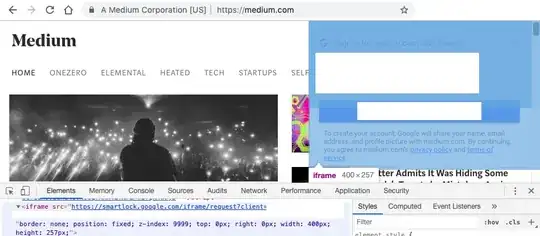I went to an article on medium.com earlier today, and instead of the annoying full screen popup they usually show to returning visitors, I saw this in the upper right corner:
Right there on the medium page they have my name and google email-address! I do not have an account on Medium, nor have I ever done anything but read various articles I received direct links to.
How is medium able to display this popup? I have no memory of telling them who I am, and with all the talk about cross-origin protections this doesn't seem like it should be possible.
I suppose it probably is a popup feature provided by google, but that sounds like it could be easily misused by any site to steal my name and email. I use firefox, so it can't be some crazy chrome feature.

